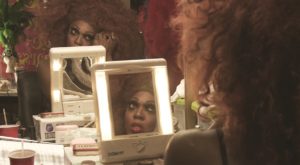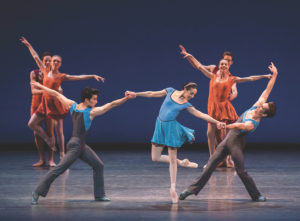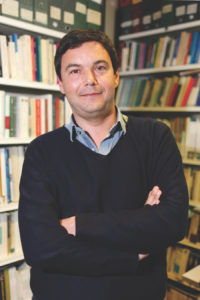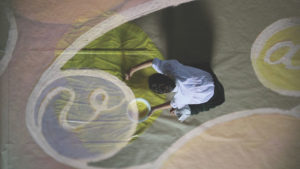Seeing Leonardo da Vinci’s Mona Lisa at the Louvre in Paris is a less-than-contemplative experience. The Renaissance painting is housed in the high-ceilinged Salle des États, which is filled with dramatic artworks. At the center of the room is a giant divider wall, and there, dwarfed and alone, hangs the Mona Lisa. It’s behind bulletproof glass and guardrails, and it’s surrounded, typically, by a horde of murmuring tourists taking pictures with their phones.
The Mona Lisa is revered as much for its fame as for its aesthetic qualities. The power of that fame is the subject of a riveting documentary, The Lost Leonardo, which has been screening at the Waters Edge Cinema in Provincetown and the Wellfleet Cinemas.

The film, directed by Andreas Koefoed, is actually about another da Vinci painting, Salvator Mundi, thought to be lost for hundreds of years. That is, until art “sleeper hunter” Alexander Parish and dealer Robert Simon bought a Renaissance painting in poor shape at a New Orleans auction in 2005 that resembled versions of Salvator Mundi by students in da Vinci’s workshop. The price: $1,175. They brought it to restorer Dianne Modestini, who tirelessly stripped off layers of added paint and filled in cracks. Modestini became convinced that the painting she unearthed could have been done only by da Vinci himself.
Though Modestini’s assertion was both validated and contradicted by experts, the painting ended up in an exhibit at the British Museum as an undisputed Leonardo, and was subsequently bought by businessman Yves Bouvier for $83 million. Bouvier then quickly flipped it, selling it in his Swiss “freeport” to Russian oligarch Dmitry Rybolovlev for $127 million. The Salvator Mundi had become a form of global currency by that point — a chip in a power game that ended when Rybolovlev sold it at a Christie’s New York auction in 2017 for a record $450 million. Reporters revealed the buyer to be Prince Mohammed bin Salman, the brutal strongman of Saudi Arabia.
Koefoed manages to get all the players on camera in The Lost Leonardo except the Saudi prince, and they’re all — academics, dealers, journalists, critics — open about their certainties and doubts. The most intimate part of the movie is seeing restorer Modestini at work. She conveys the magic and joy of being close to a masterpiece, while everyone else focuses on the cloak-and-dagger business of selling, promoting, and mythologizing a rare work. Despite its amped-up, thriller score, The Lost Leonardo, in the end, is really a sad story about big-money hustlers. The art itself is almost irrelevant.
Watching the FX cable series American Horror Story: Red Tide (also streaming on Hulu), one gets the same feeling of utter aesthetic emptiness, though no masterpiece is really in question.

The six-episode Red Tide, which had exteriors shot in Provincetown and has thus become a sensation locally, is contained within a “double feature” 10th season of the anthology series created by Ryan Murphy and Brad Falchuk. (The second “feature,” beginning Sept. 29, is subtitled Death Valley and involves aliens in the desert.) Red Tide does not feature reincarnated Pilgrims, as some originally suspected, but takes place in present-day Provincetown in the winter, where a TV writer, Harry Gardner (Finn Wittrock) has taken his pregnant wife (Lily Rabe) and nine-year-old bad seed daughter (Ryan Kiera Armstrong) to live while he works on scripts.
The “horror” of AHS is here generated by a Chemist (Angelica Ross), who distributes a creativity-enhancing drug that turns aspiring artists into vampires. To be precise: they become vampires if they’re talented; if they’re not, they become bloodsucking zombies. (One of the show’s many preposterous conceits is that talent or the lack thereof can be ascertained biologically.) Along with this Jekyll-Hyde aspect of the Chemist’s pills, and the show’s Faustian theme, Red Tide throws in every gothic horror cliché there is. It’s a muddled, and decidedly lowbrow, stew.
Harry is a schlock writer who hopes to reach Tarantino heights. Coaching him are Austin Sommers (Evan Peters), a Tony-winning playwright, and Sarah Cunningham (Frances Conroy), a romance novelist whose books, the Chemist attests, made her want to “rub one out.” Fine art, indeed.
Though Provincetown is its backdrop, Red Tide doesn’t paint a very flattering portrait of the place. The town government deals with the surfeit of mutilated corpses as a P.R. issue they can ignore till high season. Drag queens are murdered by vampires en masse — they’re regarded as the kind of people who don’t deserve to live. Harry goes up to the Dick Dock one sunny winter day and encounters a handsome hustler who asks him if he prefers topping or bottoming; Harry says “neither” and slits his throat. The show’s contempt for societal outliers is genuinely offensive and serves no satirical purpose.
AHS specializes in pastiche and gore porn, meant as some sort of campy ode to tropes of yore: creepy makeup and desaturated color; hammy acting; overhead, low-angle, and off-kilter shots; cemeteries and streets filled with mist. There’s hardly any suspense or humor, and you won’t find any of the unlikely locales (a well-lit shower; a beach with children swimming) or the meditations on evil (Halloween’s Michael Myers) that make some horror movies great.
Macaulay Culkin, who makes his AHS debut as a P’town drug dealer and hustler, offers the best performance in the series: he downplays the melodrama and generates actual pathos. His love interest — a homeless artist played by AHS regular Sarah Paulson — looks ridiculous in hideous teeth and bag-lady clothes. She’s supposed to be Red Tide’s moral bellwether, but when she finally breaks down and takes the magic pill, making a drawing at the ocean before offing herself, we never get to see the finished artwork. Which is just as well: with the show’s empty opinion of art, it’s bound to be underwhelming.













